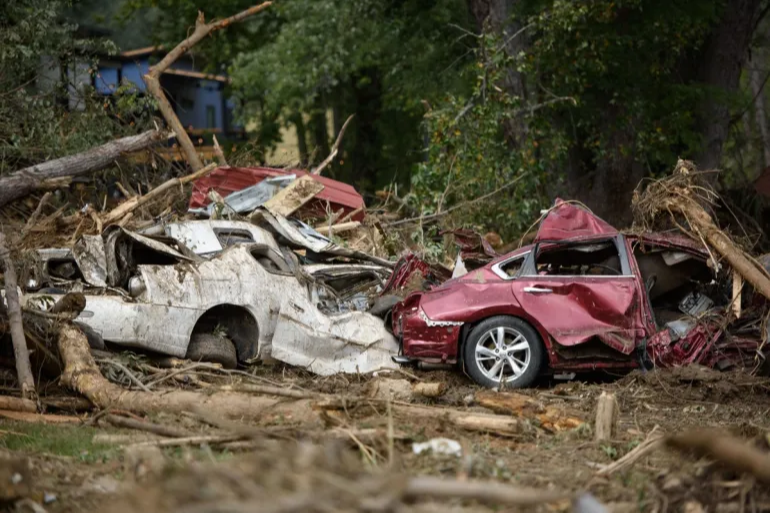
Miami, October 9 (RHC)-- Climate change intensified Hurricane Helene, which late last month killed at least 230 people and devastated large swaths of the southeastern United States, according to researchers. The warming climate increased Helene’s wind speeds and rainfall, and made the high sea temperatures that fuelled the storm up to 500 times more likely, the World Weather Attribution said in a report released on Wednesday.
The effects of climate change increased Helene’s wind speeds by about 11 percent, or 13 miles per hour (21 kilometres per hour), and increased the rainfall it dumped on the US by about 10 percent, the researchers said. “All aspects of this event were amplified by climate change to different degrees,” co-author Ben Clarke, a researcher at Imperial College London, told a news conference. “We’ll see more of the same as the world continues to warm,” he warned.
Helene made landfall in Florida on September 26, with a record storm surge 15 feet (4.57 metres) high and winds reaching 140mph (225km/h). Pummelling Georgia, the Carolinas, Tennessee and Virginia, the storm decimated remote towns throughout the Appalachians, leaving millions without power, cellular service and supplies, as well as killing hundreds.
The study was released as the state of Florida braces for the arrival of another hurricane, Milton. Helene dumped more than 40 trillion gallons of rain onto the region, meteorologists estimate. That rainfall would have been much less intense if humans had not warmed the climate, according to the WWA report.
“In today’s climate, that has already been warmed by 1.3 degrees Celsius [2.34 degrees Fahrenheit], due primarily to the burning of fossil fuels, weather observations indicate that rainfall events as severe as those brought by Hurricane Helene now occur about once every 7 (3 – 25) years in the coastal region, and about once every 70 (20 – 3000) years in the inland region,” it said.
Many of those who died amid Helene’s fury fell victim to massive inland flooding, rather than high winds, the WWA noted. “The rainfall was about 10 percent heavier due to climate change, and equivalently the rainfall totals over the 2-day and 3-day maxima were made about 40 percent and 70 percent more likely by climate change, respectively,” the study said.
Should the world continue to burn fossil fuels, sending the global climate to 2 degrees Celsius [3.6 degrees Fahrenheit] above pre-industrial levels, “devastating rainfall events” will become another 15 to 25 percent more likely, the researchers warned.
[ SOURCE: AL JAZEERA AND NEWS AGENCIES ]

